Posts for: evandr
Sep 29, 2011 13:27:33 #
GGiant67 wrote:
evandr, I like your welder mask idea, but I have to disagree with your other comment. The iris, as soon as there is a "pin hole" opening, exposes the entire surface of the film or sensor. The iris shutter is layered into the lenses. If it were right up against the film or sensor, I would agree, but it isn't.
Yes that is true, not knowing the internal workings of the Hasselblad I did not consider that. Thanks for the info! The question I would have is how does an Iris shutter achieve extream shutter speeds if the iris has to open, stop, and then close again; perhaps it can do it in 1/4000th of a second, I just cannot wrap my mind around it.
Sep 29, 2011 13:19:51 #
BigD wrote:
Evander you are mostly correct. The flash does not... (show quote)
True, but it still boils down to getting enough even light onto the sensor quick enough to create the frozen picture. You mention an airplane propeller; a sufficiently powerful enough flash will illuminate the blades sufficiently and instantaneously enough to freeze them with a rear curtain sync speed of 1/250th of a second but they will probably look somewhat ghosted unless you really know how to set up the camera. Its not the intensity of the flash that matters so much as it is the duration of the flash with respect to the shutter speed and whether or not that intensity is made available to every pixel of the sensor equally. Freezing an airplane propeller is easy dont use a flash! You can make that propeller look like it is standing still by using a powerful flood light, a very fast shutter speed and an elevated ISO (if the plane is moving or in flight then that would be a real trick).
In any case, special equipment and procedures may be warranted to get the job done but shutter speed has nothing to do with how a pixel will register light only how much light is presented to that pixel.
Sep 29, 2011 13:00:45 #
GGiant67 wrote:
The only type of shutter that prevents this is an Iris type (Hasselblad, for example).
That is not entirely true, even an Iris shutter does not expose the entire surface of the sensor all at once. I'm waiting for the day that the technology is refined enough that a shield, such as the one found on a welding mask, would cover the sensor and can be made to go from passing no light to passing 100% of the light for a user preset amount of time and then back with the push of a button or maybe the sensor itself could turn on and off for a period of time set by the photographer - No shutter at all, just electronics - would be nice wouldn't it.
Sep 29, 2011 12:46:20 #
I think it all boils down to one simple question "is there enough constant light to properly expose each pixel sensor in 1/4000 of a sec?
If you are trying to capture something like a bullet in flight then "Bulb" is the shutter speed you need in complete darkness with a high power flash attached to some sort of trigger that will fire it at just the right moment. If you are trying to freeze a beating or rotating object then a constant intense light would be required in conjunction with a high shutter speed. In the case of a hummingbirds wings where you have both fast and slow moving subjects then the shutter speed is not the main consideration, its the speed, power, and sync position of the flash that matters the most if you want to capture the bird, freeze its wings, AND properly expose the background.
Now to answer you question directly IF your sensors pixels are sensitive enough to register the available light at 1/4000 of a second then yes you could freeze anything; sufficient light is the key. The principle is no different than the ability to freeze a slower moving subject at slower shutter speeds (say 1/350th of a second), it simply depends on how much your subject will move during the given exposure time and whether or not the available light will be sufficient and constant during the exposure.
If you are trying to capture something like a bullet in flight then "Bulb" is the shutter speed you need in complete darkness with a high power flash attached to some sort of trigger that will fire it at just the right moment. If you are trying to freeze a beating or rotating object then a constant intense light would be required in conjunction with a high shutter speed. In the case of a hummingbirds wings where you have both fast and slow moving subjects then the shutter speed is not the main consideration, its the speed, power, and sync position of the flash that matters the most if you want to capture the bird, freeze its wings, AND properly expose the background.
Now to answer you question directly IF your sensors pixels are sensitive enough to register the available light at 1/4000 of a second then yes you could freeze anything; sufficient light is the key. The principle is no different than the ability to freeze a slower moving subject at slower shutter speeds (say 1/350th of a second), it simply depends on how much your subject will move during the given exposure time and whether or not the available light will be sufficient and constant during the exposure.
Sep 27, 2011 09:16:28 #
bobmielke wrote:
I've heard they're now selling a variable ND filter by Fader with a 2-8 stop range. 77mm is $300 at B&H.
I've heard nothing bnut terrible reviews on the variable ND filters. They say that the density is not even across the filter.
Sep 27, 2011 07:49:25 #
LarryD wrote:
Looks good.. The edit is well worth the effort..
And, the rule of thirds is firmly in place in this photo..
The birds eye, the focal point in bird imagery, is precisely at one of the rule-of-thirds "power points"..
And, the rule of thirds is firmly in place in this photo..
The birds eye, the focal point in bird imagery, is precisely at one of the rule-of-thirds "power points"..
Not to mention that a diagonal, in this case the branch, is a concept of intersecting two power points so in this image the compliance to the rule of thirds is very evident in that three of the four power points is represented.
Sep 26, 2011 15:25:13 #
marcomarks wrote:
quote=evandr quote=bobmielke quote=PaulaNeil I ... (show quote)
I agree with your comment about the polarizing filter, I just never took many shots away from the glass so the thought of using one in an otherwise dark enviroment where glare from external sources was never a real problem never crossed my mind. As for using a wide angle lense you have to be careful, a wida angle lens at such close focusing distances can compress and distort the image so that it is quite obvious.
The image I have posted below, although not an aquarium, illistrates what I am saying. The whisky bottle is a full 5th in size but due to its close proximity (only 12 inches) to the lens it looks like a shooter that is melting on the left side. The background is the Kennecott Copper Mine in Salt Lake City
Shot in full manual, 17-35mm lens at 17mm, f/22, ISO 800 for 1/80th sec.
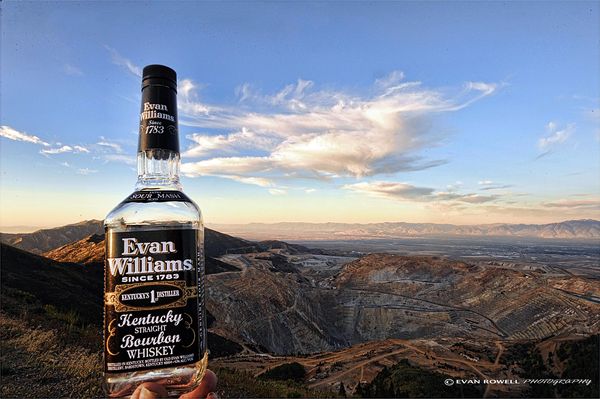
Sep 26, 2011 11:51:52 #
Mary P wrote:
Wish I was going for a major, but I've been taking online classes from the Perfect Photo School of Photography (PPSOP).
Bryan Peterson, the founder of PPSOP, is my favorite person to learn from. I would be taking his online classes right now if I were not half way through the NYIP online course (New York Institute of Photography)
The picture is the result of my efforts to put into practice what I learned from one of his YouTube videos, oil and water.
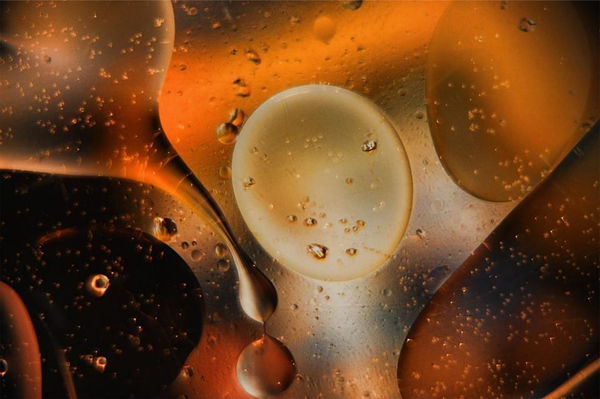
Sep 26, 2011 03:39:34 #
Mary P wrote:
That's the problem. Getting the sweet spot in good focus. The muse is especially difficult, I believe.
There is no getting around it, using the lensbaby system takes a lot of practice and I do not do as much as I would like because of my other work. Most of the time I use my lensbaby as an after thought at a shoot, I really should spend some serious time with it, I have seen some excellent and quite unique work done with them by people who work with them extensively.
Sep 25, 2011 23:21:14 #
photog_mom7 wrote:
I'm a newbie (2nd semester photography major). What is a Lensbaby used for?
I have the complete lensbaby lineup and I do enjoy using them. The best thing about the lensbaby is that you can get a wide variety of fairly good glass and special effects inserts such as the pinhole and the plastic optics, amoung others, for less than you would pay for one good DSLR lense. The insert that I use the most is the Sweet 35 optic which is designed to produce an image with graduated bokeh "front to back" starting at the edge of the frame and getting sharper to a crystal clear "Sweet Spot" in the middle of the frame, a very nice effect and something a regular lense will not do. I use the composer body because it allows you to tilt the lense so the sweet spot can be placed anywhere you want it on the frame.
The system is manual focus and, except for the sweet 35 optic which has an aperture ring used to adjust the size of the sweet spot, the lenses require inserts to adjust aperture so the lens system is not one to use on the fly.
I use all high end Nikon lenses but I invested in the Lensbaby system to expand my specisal effects capabilities on the camera without having to do a lot of post production that are never quite as good. It does take some practice to use correctly but once you get good at it the effects are excellent. I love how the plastic optics will emmulate the special effect that old time lenses used to produce and how the pin hole can produce a soft dreamy focus. Uswe the variety of inserts for even more varied effects.
The system has wide angle and ultra wide angle lense adapters as well as macro adapters for their inserts. The quality is excellent and the results are impressive. This is not cheap glass but it is a simple enough system that it does not cost an arm and a leg to get, I paid right around $1000 for the whole system except for the scout body which I do not currently have.
I used the sweet 35 optic on this shot. Like I said, practice makes perfect and I could have got this shot a bit sharper in the sweet spot but you get the idea.
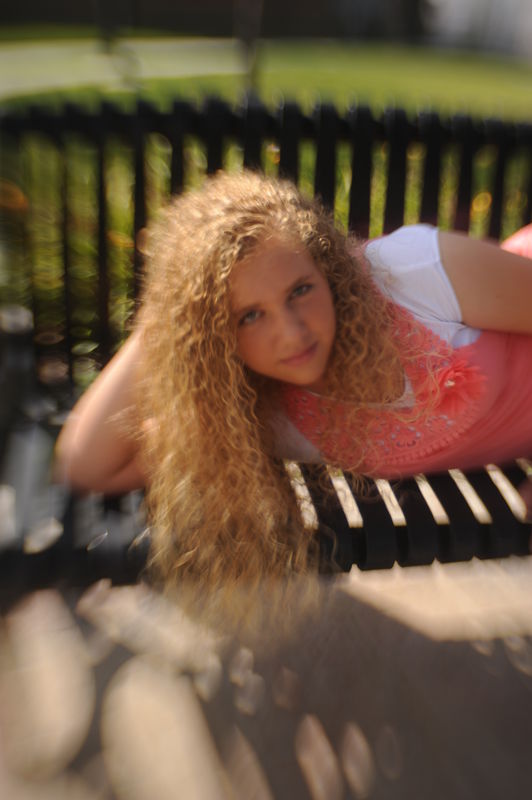
Sep 25, 2011 01:21:45 #
PhotoGeezer wrote:
quote=PaulaNeil I have to opportunity to take pho... (show quote)
I always have a UV on all my lenses to protect the precious glass but a polarizer stops down the lens by 2; for me that nullifies the advantages of having a 1.4 lense so I only use one when I feel the need. I guess using a polarizer would have been a good idea at the Living World Aquarium in Salt Lake City when tank glare could not be avoided on some shots but the added f/stops provided by not having a polarizer made for more flexability.
Sep 24, 2011 15:54:35 #
hobbycam wrote:
I have had some luck, though not very sharpfocus shooting at an angle with flash. The photos I have sampled here has strong light coming from the top, the glass made this shot hard to take.
Dont be afraid to experiment , you can always view the photo and retake if necessary. :-)
I hope this helps
Dont be afraid to experiment , you can always view the photo and retake if necessary. :-)
I hope this helps
Shooting flash at an angle from a distance does not always work, spots on the glass or a hazy film may be illuminated, the glass has to be clean and clear for best results; also you cannot use the flash on full power because it is hard to avoid some reflective flair even on clean glass. It does require some trial and error. I took these pictures using flash.
This crab was in a restricted tank just big enough for it to fit in, I angled the camera down from about 12 inches away with the flash on 1/4 power
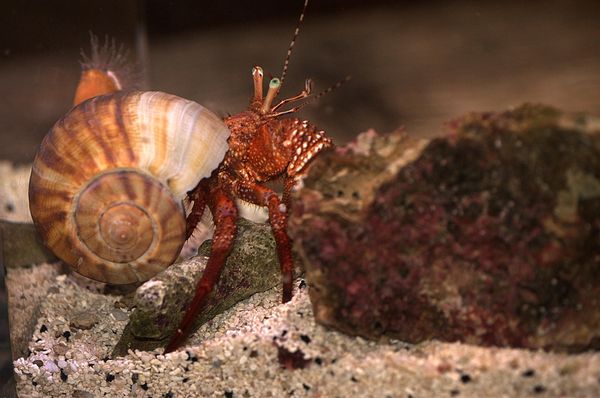
This one was taken with flash back about 2 feet from the tank standing at about a 30 degree angle from the plane of the glass
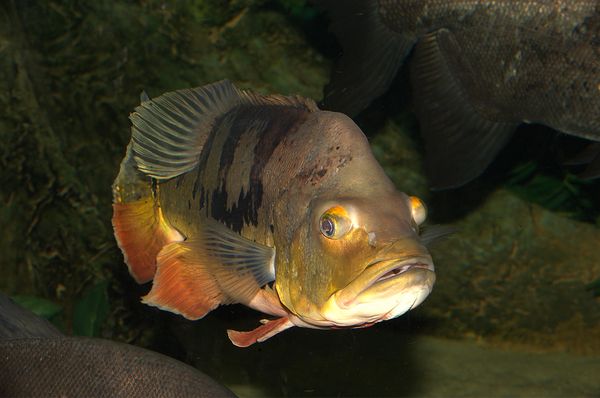
I had the lens right up against the glass when this was shot and again I used the flash at 1/4 power off camera, I had a mirrored reflector bouncing the on-board flash straight up.
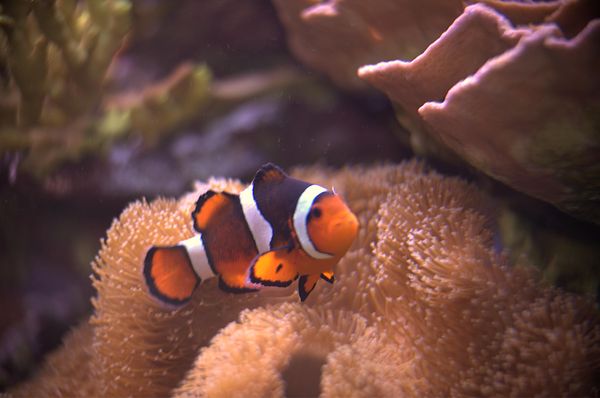
This was a large tank (swimming pool size) I had the camera up against the glass angled down with my hand over the lense to shield it from the flair of the flash
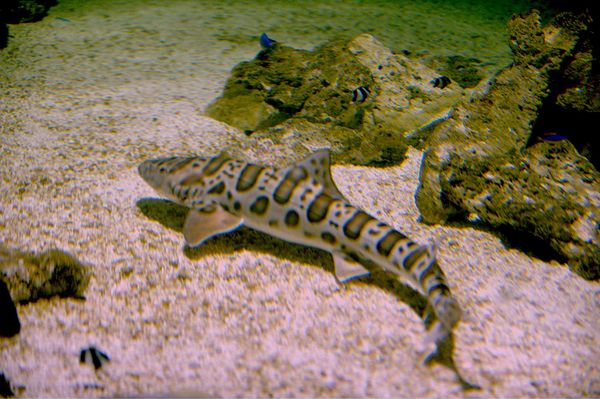
I stood back away from this tank with no flash, ISO 1000 @ 1/125th sec. using a Bush Hawk hand held camera mount to steady the shot.
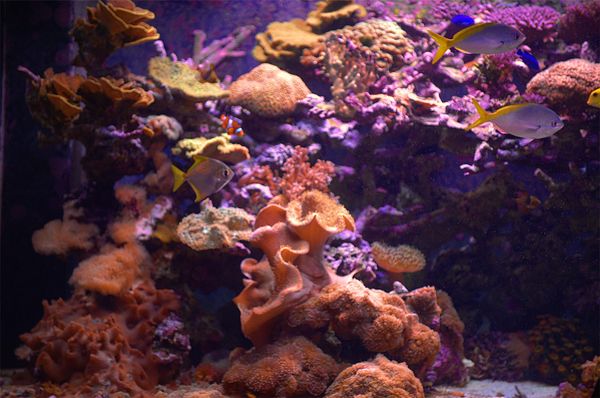
Sep 24, 2011 15:54:00 #
Sep 24, 2011 05:38:12 #
bobmielke wrote:
polarizing filter & no flash
PaulaNeil wrote:
I have to opportunity to take photos at the large aquarium. Tanks of colorful fish, sharks and jellyfish. Any tips on this type of photography would be appreciated.
Thanks
Thanks
polarizing filter & no flash
Sometimes you need a flash, in fact with fast moving fish a fast shutter is necessary and that means having a flash unless the tank is very well lit up or the ISO is highly elevated.
I have photographed at several aquariums and found it successful to use a flash if the camera lens is up against the glass as flat as can be so any glass not directly in front of the lens will not be in the picture and thusly neither will the flare of the flash. Of course sometimes you need to angle the camera in such a way that having the lens flat on the glass is not possible in which case a cupped hand over the opening between the lens and the glass will work. If this is a real special opportunity then getting a rubber shroud that will flex against glass completely sealing it from flare will work very well. Something else that will help is to use off camera flash in which case both hands will most likely be used and therefore a rubber shroud is a must; in either case setting the flash to 1/2 power or less is plenty and usually 1/3 to 1/4 power will do quite nicely. As for using the polarizer, I never did and got great results but it sounds like it might be a good idea, I'll have to try it, especially when shooting from a distance.
If you are trying to shoot the whole tank from a distance then try not to shoot it straight on, sometimes you can get away with using a flash if you angle the shot relative to the plane of the glass on the tank so the light of the flash does not reflect directly back into the lens of the camera.
Another thing when shooting from a distance is that usually the tank is smaller and brighter than the surrounding so be sure to spot meter on the bright part of the tank and not the whole surrounding because the camera will over expose the shot.
Sep 24, 2011 03:51:32 #
gessman wrote:
Hey Evandr. Your post got lost and I had a hard time finding it. Ya should've started a new thread 'cause this has the potential to be a popular idea. You're sure got an interesting beginning going there and expanded on my thoughts considerably. I'm anxious to see the end results and these pics sure makes that look like some kind of fine lens. That may be a poster idea you've got there. I'll be watching but please, do start a new thread when you make it back from the city.
Hey Evandr. Your post got lost and I had a hard time finding it. Ya should've started a new thread 'cause this has the potential to be a popular idea. You're sure got an interesting beginning going there and expanded on my thoughts considerably. I'm anxious to see the end results and these pics sure makes that look like some kind of fine lens. That may be a poster idea you've got there. I'll be watching but please, do start a new thread when you make it back from the city.
Will do but I will not have time to compose and take the shot until later next week.